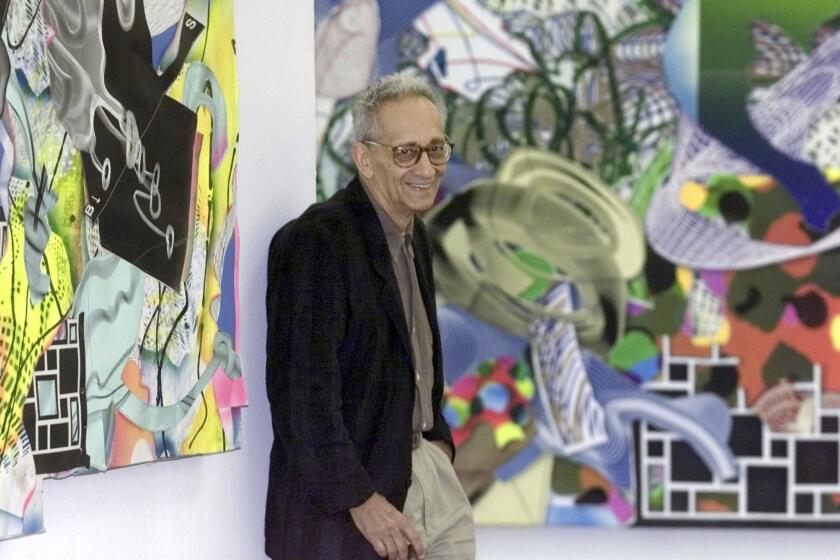Locals Seek Exemption to New Tax Law
Fearing economic dire straits, a group of concerned artists and others in the local art community are working to obtain an exemption for artists from the recent tax reform law.
Section 263A of the 1986 Tax Reform Act allows artists to deduct only the portion of their expenses used to create artworks that have been sold, said artist June Wayne, who is spearheading the tax law opposition. For example, if a painter produces 10 canvases and sells one, he may deduct only 1/10th of the cost of his materials, studio rent and other overhead, Wayne said.
Traditionally, professional, full-time artists have been allowed to deduct all their art-related expenses, and the deductions were allowed even if the artworks had not been sold, Wayne said. Further, depending on interpretation, the law may allow artists to claim deductions only on artworks sold the same year that they were created, rather than rolling over the claim to a later year of sale, she said.
The legislation “will knock a mostly borderline economic population into oblivion,” if artists are not made exempt, Wayne said.
Wayne organized a recent meeting attended by about 50 artists, art educators, collectors and others to discuss the tax law changes and says that without an exemption, she may lose her studio and will have to discharge her longtime master printer and secretary-studio assistant.
“A feeling of panic has overcome us as we face filing our ’87 returns,” Wayne said, adding that the law’s provision barring exemption claims relating to artworks made in previous years takes no account of the length of time it normally takes to sell artworks. Wayne says she routinely faces as much as two years from the time a museum decides to acquire a work to the completion of the sale.
The law also creates additional record-keeping costs and “redefines creative individuals” as nothing more than “product makers,” Wayne added.
Opponents to Section 263A of the tax reform law have about two weeks to contact their congressmen and members of the Senate Finance Committee and the House Appropriations Committee who will hopefully award the artists’ exemption, Wayne says. (Sen. Lloyd Bentsen chairs the Senate committee; Rep. Dan Rostenkowski chairs the House committee.)
Without an exemption, the law “will actually cause the government to lose tax money, rather than gain it. Many of us will have to go out of business and the art world can’t sell what we don’t make,” Wayne said.
The tax regulation affects artists working in all media, including the visual and performing arts and literature. For more information, call Wayne at (213) 464-2127 or Robin Vaccarino at (818) 762-4121.
PEOPLE: In a job change that made the news pages of the New York Times, John Wilmerding, deputy director of the National Gallery of Art in Washington, has been appointed to a new, fully endowed professorship at Princeton University and will become a visiting curator at the Metropolitan Museum of Art, New York.
Wilmerding, a leading figure in the study and exhibition of American art, told the New York Times that “the work of art and the ideas about the work have to be brought together. You have to be able to appreciate an object on its own, as a thing of beauty, but also as possessing and carrying ideas.”
Princeton officials said Wilmerding’s appointment would begin “close, formal relations between the departments of American art history at Princeton and the Met,” said Times reporter Douglas C. McGill. The officials noted that other members of the university’s art faculty will become visiting curators at the Met, and some American art curators at the museum will give lectures at Princeton.
Wilmerding, 49, is probably best known for the blockbuster 1980 National Gallery exhibit, “American Light: The Luminist Movement.”
CONFERENCE: From LACE to Sushi Inc., alternative arts organizations throughout the state and across the nation foster experimentation and support emerging artists in a way that most mainstream institutions do not. Continuing to address the needs of alternative spaces, artists and new art, the Association of Artists’ Organizations will hold its fifth annual conference here March 23-27.
LACE (Los Angeles Contemporary Exhibitions) will host the conference, to feature panels on spaces for art, education, the news media and other issues. Speakers include David Avalos, artist in residence and curator, Centro Cultural de la Raza; Catherine Lord, dean, school of art, CalArts; Gary Squire, Mayor’s appointee for housing, Los Angeles; and Philip Yenawine, director of education, the Museum of Modern Art, New York. Keynote speaker on the evening of Wednesday, March 24, will be Mary Schmidt Campbell, commissioner, New York City Department of Cultural Affairs.
The full conference fee, including workshops and music and performance art events, is $90 to the general public; registration for one day is $30. For more information or a pre-registration form, call conference coordinator Gail M. Mishkin at LACE, (213) 624-5650.
More to Read
The biggest entertainment stories
Get our big stories about Hollywood, film, television, music, arts, culture and more right in your inbox as soon as they publish.
You may occasionally receive promotional content from the Los Angeles Times.






